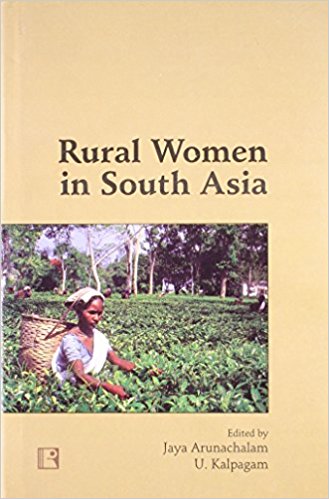Starting from the inception of women’s studies at a visible level after 1975, the primary focus of scholars in South Asia has been the identification and examination of certain aspects of society which situated women in a different context from those of the western countries. Except for metropolitan India and South Asia where gender issues could displace the issue of patriarchy, the rural areas are strongly entrenched in the feudal-patriarchal structure. This region becomes one of the most important areas to understand how far the development process in the post-colonial period has gone and what the state of women’s conditions in South Asia is. The book under review is an effort towards enriching our understanding of various issues and challenges being faced by rural women of South Asia. The problems of poverty, unemployment, violence and marginality have been discussed and examined with the help of data.
It also raises issues with regard to empowerment of women and plausibility of removing women’s marginality and poverty through a development paradigm. Outcome of the silver jubilee seminar organized jointly by the G.B. Pant Social Science Institute, Allahabad, and the Working Women’s Forum in 2004, the volume consists of twelve papers most of which are based on primary research.
- Kalpagam, Preet Rustagi and Joshi provide a panoramic scenario of women in South Asian villages. Whereas Kalpagam has mapped rural women in terms of the development levels and economic conditions of women in general, Rustagi and Joshi take up the issues of empowerment and gender discrimination respectively in South Asian countries. Bhutan may be of greater interest than other countries as little is known about it. Kalpagam informs that literacy rate among rural women in this country is ten per cent though 91.8 per cent of them live in rural areas. Despite the fact that 85 per cent of the population is dependent on agriculture and other traditional activities, 70 per cent of the country’s area is covered by forests. Rustagi takes up the issue of women’s work and empowerment and agrees with Papanek that ‘Age and gender differences confer power on some over others’ (p. 59) in South Asian societies and it is in this context that we should understand why many women oppose changing gender roles. We also come to know that Sri lanka is marginally better than other South Asian countries. Seema Joshi’s paper maps two sets of discrimination against women. These are: discrimination at the pre-market phase that is understood in terms of lack of access to education health and secondly, discrimination in the post-labour market entry phase. Virtually, in every country gender discrimination exists in the form of gender gap in wages.


Very interesting information!Perfect just what I was looking for!Money from blog